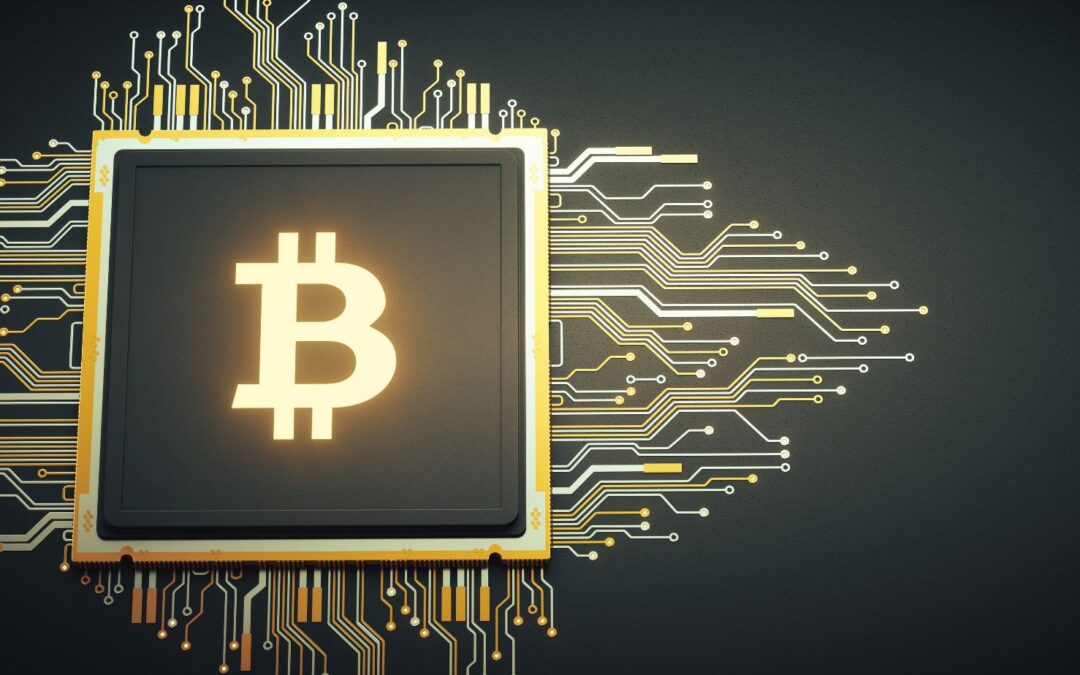The Antminer S19K Pro is currently renowned for its profitability, boasting a hash rate of 120TH/s and a power consumption of 2,760W. To evaluate the profitability of mining hardware, consider factors such as hash rate, power consumption, operating temperatures, and mining algorithms. Utilise online calculators and read reviews before making a purchase to ensure maximum profitability.
Overview of Crypto Mining Hardware
Cryptocurrency mining is more than just a way to make money; it’s a critical part of how cryptocurrencies like Bitcoin work. When people buy or sell things using Bitcoin, every transaction gets recorded in something called a blockchain. But who records all these transactions? That’s where esacademic.com cryptocurrency mining comes in.
Cryptocurrency mining hardware serves as the backbone of blockchain networks, verifying and adding new transactions to the blockchain. Miners use powerful computers to solve complex mathematical problems. When they solve a problem, they add a new “block” full of transactions to the blockchain and receive some new Bitcoins as a reward.
But what kind of computers are we talking about here? These aren’t just regular laptops or desktops. Cryptocurrency miners use specialised equipment designed to solve these complex mathematical problems with efficiency and effectiveness.
ASIC Miners
One type of cryptocurrency mining equipment is called an Application-Specific Integrated Circuit (ASIC) miner. ASIC miners are like the superheroes of cryptocurrency mining—they’re incredibly fast at solving the math problems that secure the network and validate transactions.
Not only are ASIC miners super-fast, but they’re also really good at using electricity. They’re designed specifically for mining cryptocurrencies, so they’re not doing anything else that could slow them down.
GPU Rigs
Another type of cryptocurrency mining hardware is the Graphics Processing Unit (GPU) rig. While not as specialised as ASIC miners, GPU rigs use powerful graphics cards to solve cryptocurrency math problems.
Think of it like this: Let’s say you need to do something really quickly, like draw a picture. You could use a special, super-fast drawing tool designed just for that job, or you could use a really good all-purpose tool like a high-end paintbrush instead.
Each kind of cryptocurrency mining hardware has its unique features and functionalities that are suitable for different kinds of miners.
So when you hear about people “mining Bitcoin,” what they’re really doing is using these powerful machines to help keep Bitcoin safe and make sure nobody’s cheating the system. By validating and securing transactions, these mining machines play a pivotal role in the operation and security of cryptocurrency networks.
Now that we understand the crucial role of crypto mining hardware, let’s delve into the main components that bring these rigs to life.
What are the Main Components of a Mining Rig?
Let’s envision a mining rig as a jigsaw puzzle—each piece has its own place and function, but together they work to achieve something greater. So, what are the primary elements that make up this puzzle, and how do they contribute to the success of crypto mining?
Motherboard
The motherboard is like the central nervous system of your rig. It’s the main circuit board that connects all the other components together. Ensuring it’s compatible with your CPU and GPUs or ASIC chips is crucial for smooth operation.

A mining rig needs to handle multiple GPUs or ASIC chips, so a motherboard with enough PCIe slots is indispensable. Some miners prefer motherboards specifically designed for mining, as they often have more PCIe slots catering to the needs of cryptocurrency miners.
CPUs and GPUs/ASIC Chips
The Central Processing Unit (CPU) and Graphics Processing Units (GPUs) or Application-Specific Integrated Circuit (ASIC) chips are the powerhouse of your mining rig. The CPU handles general computer operations, while GPUs or ASIC chips are responsible for hashing algorithms used in cryptocurrency mining.
When selecting a CPU, consider its compatibility with your GPU or ASIC chip and its power efficiency, as it can impact overall energy consumption. Regarding GPUs or ASIC chips, prioritise high processing power and memory capacity to handle complex hashing algorithms effectively.
RAM & Storage Devices
Random Access Memory (RAM) and storage devices such as Solid State Drives (SSD) or Hard Disc Drives (HDD) are essential for overall system responsiveness and data caching during mining operations respectively.
Imagine RAM as your work desk—the bigger it is, the more tools you can accommodate simultaneously. Similarly, SSDs or HDDs act as file cabinets, storing important data for quick access.
Power Supply Unit (PSU)
Consider the PSU as the heart of your rig, providing power to all components consistently. A reliable PSU with enough wattage is crucial, especially when you’re running multiple GPUs or ASIC chips simultaneously.
Some miners opt for Platinum or Gold-rated PSUs due to their higher efficiency, which can lead to cost savings on electricity bills in the long run. However, they come at a higher initial investment.
Understanding the fundamental components of a mining rig sets the stage for exploring the comparative advantages of ASIC versus GPU mining rigs—the next frontier in optimising crypto mining setups.
ASIC Versus GPU Mining Rigs
When it comes to cryptocurrency mining, choosing the right hardware is crucial. ASIC (Application-Specific Integrated Circuit) miners and GPU (Graphics Processing Unit) mining rigs represent the two primary options, each with its own set of advantages and disadvantages.
ASIC Mining Rigs
ASIC miners are highly specialised machines designed to carry out a specific task – in this case, mining a particular cryptocurrency algorithm. This specialisation makes them incredibly efficient at solving hashing problems and earning rewards. Their efficiency is unmatched, making them the preferred choice for serious miners looking to maximise their profits.
For instance, Bitcoin ASIC miners are tailored specifically for SHA-256 hashing algorithms, ensuring unparalleled performance for Bitcoin mining. This focused approach results in significantly higher hash rates and lower energy costs per hash, ultimately translating to greater profitability.
GPU Mining Rigs
On the other hand, GPU mining rigs offer a different set of benefits. While they may not match the efficiency of ASIC miners for a single algorithm, they provide versatility by being able to mine various cryptocurrencies. This flexibility makes them appealing to miners who want to explore different coins and algorithms without needing separate dedicated hardware for each.
The ability to switch between cryptocurrencies based on profitability can be a significant advantage in a dynamic market where the most profitable coin is constantly changing. Furthermore, GPUs can also be repurposed for gaming or other computationally intensive tasks when not used for mining, adding another layer of utility.
However, this versatility comes with trade-offs. GPU mining rigs often consume more power than their ASIC counterparts, leading to higher electricity costs. Additionally, while they can adapt to different algorithms, they may not match the tailored efficiency of ASIC miners for specific coins.
For example, Ethereum GPU miners have to contend with higher power consumption due to the memory-intensive nature of Ethereum’s hashing algorithm, which requires significant resources from GPUs.
As we can see, both ASIC and GPU mining rigs possess distinct characteristics that cater to different needs and preferences in the ever-evolving landscape of cryptocurrency mining.
Now that we’ve unpacked the differences between ASIC and GPU mining rigs, let’s move on to assess the performance and efficiency of various mining hardware in detail.
Evaluating Mining Hardware: Performance and Efficiency
When choosing mining hardware, it’s crucial to consider various factors that directly impact its performance and efficiency. Hash rate refers to the speed at which a particular machine can process data and solve complex mathematical problems, crucial for finding the next block in a cryptocurrency’s blockchain. The higher the hash rate, the more computations it can perform, increasing the chances of earning rewards. However, this also means higher energy consumption and heat generation, so it’s essential to strike a balance between high hash rates and optimal power efficiency.
Power consumption is a significant aspect of mining hardware evaluation. Energy-efficient miners have lower operational costs, contributing to increased profitability. High electricity usage not only affects operational expenses but also impacts environmental sustainability. Finding a mining rig with an optimal ratio of hashes per watt can significantly improve overall profitability while reducing environmental impact.
Heat dissipation is another critical consideration when evaluating mining hardware. As these machines work tirelessly to solve cryptographic puzzles, they generate a substantial amount of heat. Efficient cooling systems or ventilation are necessary to maintain the hardware’s longevity and prevent overheating, ensuring consistent performance over time.
For example, advanced cooling solutions such as liquid cooling or immersion cooling can effectively regulate the temperature of mining equipment, extending their lifespan and reducing the risk of hardware malfunctions due to heat-related issues.
Cost-effectiveness is essential for miners, particularly when considering the initial investment required for purchasing mining hardware. While high-performance machines may come with a higher price tag, their long-term profitability potential must be carefully examined. Additionally, maintenance costs should be factored in, alongside potential resale value if planning to upgrade or replace mining equipment in the future.
In summary, evaluating mining hardware goes beyond simply examining hash rates. It involves careful consideration of power consumption, heat dissipation capabilities, cost-effectiveness, durability, and potential for resale value. Striking the right balance between performance and efficiency is critical for maximising profitability in crypto mining operations.
Moving forward in our exploration of crypto mining dynamics and profitability metrics brings us to an indispensable part of the equation—assessing hash rate and profit potential.
Assessing Hash Rate and Profit Potential
When it comes to crypto mining, a key concept to understand is the hash rate. Simply put, the hash rate refers to how fast your mining machine can process and solve complex mathematical problems, measured in hashes per second. The higher the hash rate, the more calculations it can perform in a given timeframe. This is important because the more calculations your machine can perform, the more likely it is to validate a new block on the blockchain network, thereby earning you rewards.
In essence, a higher hash rate typically translates to increased profitability. However, achieving a high hash rate isn’t always straightforward and may require sophisticated and powerful hardware. For instance, as of 2024, mining Ethereum profitably would necessitate a machine with a hash rate of approximately 15,500 Mh/s.
Now, at first glance, this might seem like a staggering figure, and understandably so. Achieving this level of efficiency typically requires over 50 GPUs in your mining rig. But why does hash rate matter so much? Well, it directly impacts your potential earnings by determining how quickly you can validate transactions and secure rewards.
Consider this analogy: Imagine you’re in a race where the finish line represents validating a block and receiving rewards. Your hash rate is essentially how fast you can run. The faster you run, the quicker you reach the finish line and claim your prize. Similarly, a higher hash rate allows you to complete more calculations in less time, increasing your chances of being the first to validate a new block and earn rewards.
While it’s easy to get caught up in the allure of high hash rates, it’s crucial to remember that Ethereum mining difficulty can change over time. This means that the required hash rate for profitable mining may vary. Therefore, it’s advisable to stay informed about current mining conditions and regularly calculate your potential profitability using a reliable Ethereum mining calculator.
Moreover, achieving high hash rates can come with significant electricity costs and hardware investments. It’s essential to carefully consider these factors before diving into crypto mining as it can be energy-intensive and may not be financially viable for everyone.
Understanding the dynamics of hash rates and their impact on profitability sets the stage for evaluating the financial landscape of crypto mining. Now, let’s delve into analysing the upfront costs and ongoing expenses involved in this high-stakes endeavour.
Upfront Costs and Operating Expenses in Crypto Mining
When considering cryptocurrency mining, it’s crucial to weigh both the initial investment and the ongoing expenses. The primary costs of mining hardware, facility setup, and cooling systems form the backbone of your operation. You’ll also need to account for recurring expenses like electricity, maintenance, and network fees.
Let’s start with the initial investment. Acquiring the right mining hardware is critical, as it directly impacts your operational efficiency and profitability. The cost of high-quality mining equipment can be substantial, and it’s important to invest in reliable hardware that can withstand the demands of continuous operation. When calculating upfront costs, don’t forget to include ancillary services such as setting up a dedicated mining facility and implementing proper cooling systems to ensure optimal performance and prevent overheating.
In addition to hardware expenses, electricity consumption represents a significant ongoing cost in cryptocurrency mining. The energy required to power and cool your mining equipment can contribute substantially to your overall operating expenses. It’s crucial to select a location with access to cost-effective electricity or explore alternative energy sources such as renewable power to mitigate these ongoing costs.
For example, some miners choose locations with naturally cooler climates to reduce the need for extensive cooling systems, thus saving on electricity costs. Others may invest in solar or wind power to offset their energy consumption. These strategic decisions play a pivotal role in shaping the long-term sustainability and profitability of a mining operation.
Considering these costs is akin to budgeting for an efficient engine that powers your mining endeavours. Just as a race car needs top-quality components and efficient fuel management to succeed, cryptocurrency miners require dependable hardware and energy-efficient practises to maximise their profitability.
With careful planning and consideration of these factors, miners can develop a comprehensive understanding of the total cost of ownership associated with cryptocurrency mining. This holistic approach is indispensable for evaluating the feasibility and profitability of engaging in this dynamic industry.
Understanding the intricacies of crypto mining expenses provides a solid foundation for comprehending the risks and rewards associated with this venture. Now, let’s delve into why crypto mining can be remarkably profitable despite its inherent risks.
Why Crypto Mining Can Be Profitable Despite Risks
Engaging in crypto mining can seem like a roller coaster ride, with market ups and downs, regulatory uncertainties, and rapid technological advancements constantly reshaping the landscape. However, even with these potential hazards on the horizon, there are strong reasons why many individuals and businesses still find crypto mining to be profitable.
One of the primary reasons behind the profitability of crypto mining lies in the potential for high returns.

Cryptocurrencies have experienced remarkable price increases over the years, leading to substantial profits for those who mined and held onto their digital assets. The volatile nature of cryptocurrency markets can create opportunities for significant gains, making it an enticing venture for miners.
Market Volatility: A Double-Edged Sword
Cryptocurrency prices can fluctuate widely within short periods. This volatility can both increase the potential rewards and intensify the risks associated with mining. For instance, a sudden surge in the value of mined cryptocurrencies could lead to substantial profits when cashed out at opportune moments. Conversely, a sharp downturn could erode the profitability of mining operations or even result in losses if proper risk management measures are not in place.
Additionally, efficient mining hardware plays a crucial role in maximising profitability when used in environments with low-cost energy. The use of advanced mining equipment designed to deliver high hash rates while consuming minimal power contributes significantly to cost-effective mining procedures.
Efficiency Is Key
Mining hardware efficiency directly impacts a miner’s ability to generate profits. Efficient hardware offers a higher hash rate—the speed at which a mining machine operates—achieving a greater number of successful computations per second. Combined with low power consumption, this results in higher productivity and reduced energy costs.
For example, the Antminer S19 Pro boasts a hash rate of 110 TH/s and consumes 3250W, making it an efficient choice for industrial mining operations that require high performance and reduced energy expenditure. When calculated against electricity expenses and current cryptocurrency prices, such hardware can offer substantial returns on investment.
Moreover, locating mining facilities in regions with access to cost-effective energy sources—such as hydroelectric or geothermal power—further enhances the profitability of crypto mining endeavours. These environmentally-friendly power alternatives provide miners with competitive electricity rates, lowering operational expenses and bolstering overall profitability.
By harnessing efficient hardware and selecting low-cost energy environments, miners can mitigate potential risks such as market volatility and regulatory uncertainties, positioning themselves for sustained success in the dynamically evolving landscape of crypto mining.
To navigate the ever-shifting terrain of crypto-mining profitability effectively, understanding the dual nature of market volatility and the significance of efficient hardware is fundamental. Finding this balance is key to sustainable success.
Jessica has a flair for writing engaging blogs and articles. She enjoys reading and learning new things which enables her to write different topics and fields with ease. She also strives to break down complex concepts and make them easy for anybody to comprehend.





